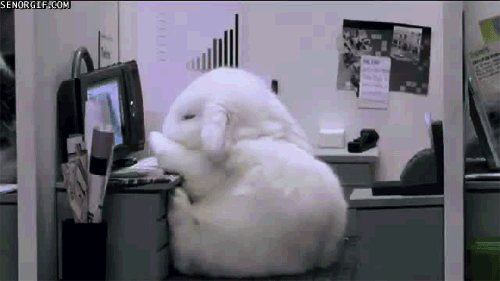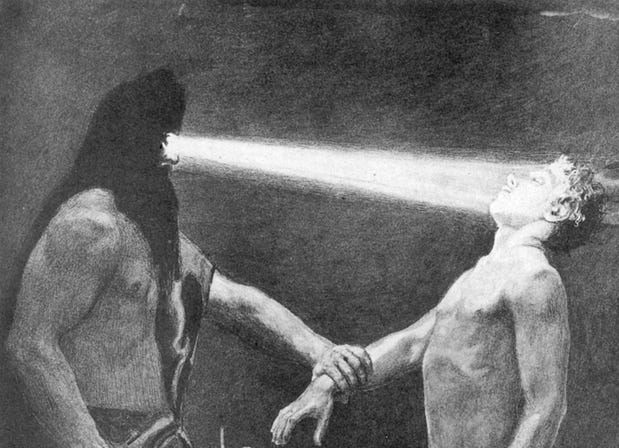Letters From the Unconscious
Dreams, AI, and the strange intimacy of being reflected without judgment
One morning, half-asleep, I typed a dream into a chat window and asked the machine to analyze it through a Jungian lens.
That was it. No big plan, just curiosity.
I didn’t know then what it would become: a strange collaboration between my dreaming mind and AI, revealing what my conscious mind had been too tangled to name.
⁂
Jung believed the unconscious speaks in symbols for a reason. Not to obscure truth, but to render it tolerable. He wrote that if the psyche delivered its insights directly, the ego would reject them. So it disguises urgency as absurdity—the truth sideways, in images strange enough to bypass our defenses.
“The dream is a spontaneous self-portrayal, in symbolic form, of the actual situation in the unconscious,” Jung wrote. “They show us the unvarnished, natural truth.”
Each morning, still half-submerged in sleep, I wrote them down—not interpretations, but details. I wrote the feeling before the plot, because who knows what the plot of a dream is, anyway. Snail-shells in my mouth. I try to speak around them. They clack against my teeth. I spit, but nothing leaves. I woke, jaw sore, exhausted. An encounter with a dolphin, intimate and slow, just before it turns into a floppy-eared rabbit. I wake up feeling seen like I’d always longed for.
This was not a performance of introspection. It wasn’t a stunt or a trick or a shortcut to meaning. It was a question: could artificial intelligence, trained on psychology, archetype, and symbolic theory, reflect something real back to me? Could a system without instinct—one that doesn’t dream, doesn’t dissociate, doesn’t remember childhood—help me recognize something about my own?
Turns out, it could. Not because the machine was wise or kind or curious—in fact, the lack of human interference, in this case, made it feel more true. No softening, no bias, just patterns, cloaked in the surreal and often morbid creation of my subconscious, it reflected my human existence with unnerving precision: joy immediately followed by guilt, autonomy masking control, a hunger to be seen then chased by shame for needing anything at all.
It mapped the repetitions I’d been living for years, just dressed as an invisible dog, shapeshifting color as I climbed a winding staircase. A speckled bird, just before my cat slaughtered it with shameless satisfaction. A set of tiny shovels, rather than keys.
At first, I was skeptical.
This was fertile ground for AI hallucination or simply making up a very convincing narrative about archetypes and symbolism that I wouldn’t have known the better for. But you can’t ignore the truth that your body already knows—i’d seen it, lived it. I just didn’t know how to say it aloud.
⁂
Over the course of a year, I wrote over fifty dreams and sent them to the machine. The process became strangely intimate. I’d send the dream, receive the reflection, and then feel something click—a daily affirmation of my personal strife and struggle.
Fun? Absolutely not. Helpful? Indispensably so.

A translation of my own brain, back to myself, with no emotional investment. An indifference and directness I craved.
Jung once described dreams as letters from the unconscious that we fail to open. This experiment was a way of opening them. Not decoding, but noticing. Emotional pattern. Symbolic pattern. The kind that becomes visible only when someone—or something—holds it still long enough for you to see.
I don’t believe the machine understood me. That’s not what machines do. But it didn’t deny me. It held space for something my own mind couldn’t always track: a logic based on association, not reason. What was I trying to show myself, this brain who’s dreamt since our shared childhood, dressed in different costumes, but with the same message?
Some mornings I woke from nothing but dread. My partner would tease me, “How was the night shift?” Like I’ve been somewhere real.
I had been. And sometimes, it was better than real life. Your mind performing what it feels like to have what you desire most—not to taunt you, but so that you’ll do something about it.
The dreams weren’t random. They weren’t riddles to solve. They were encounters. Experiences my ego wasn’t ready to face directly, offered in the only language the rest of me could speak.
The machine just didn’t look away.
⁂
Some dreams don’t fade. Not because they’re loud, but because they’re precise.
I still think about the condor. The way it didn’t move. The way its wings seemed too big for the cage but it didn’t struggle. It was just there. Watching. As if waiting for me to decide whether it mattered. Turns out that was me, in the cage. My untapped growth. But why could I only see part of it? Obscured by a crack in the window? Because I wasn’t ready, yet, to go there.
This experience made me feel more connected to myself. My brain. What I do to protect myself like a parent to a small child. Small steps toward the big slide.
The AI never asked how I felt. It just held the frame. And that was its strange gift—neutral reverence. Dreams don’t explain. They rehearse. The truth, depicted in the surreal, until the rest of you can bear it.



